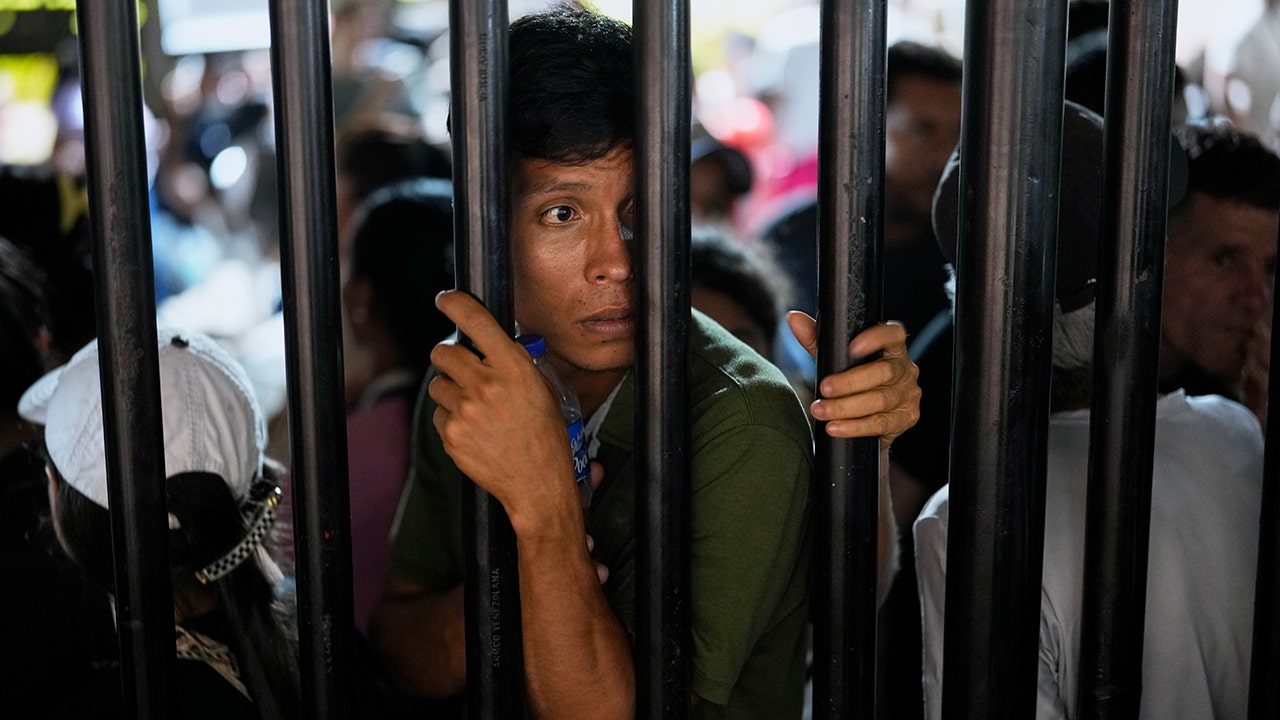M. S. Swaminathan, the eminent crop geneticist who fused plant breeding science with keen administrative skills to produce bountiful harvests that ended famine and steadily transformed India into one of the world’s top growers of wheat and rice, died on Thursday. He was 98.
His daughter Nitya Rao confirmed the death.
Known around the world as the father of India’s Green Revolution, Dr. Swaminathan’s research, along with training programs he developed to teach farmers how to cultivate more productive varieties of wheat and rice, warded off starvation for hundreds of millions of people.
During more than seven decades, Dr. Swaminathan steadily built one of history’s most formidable careers in crop science and food production. He got his shoes muddy in farm fields and strained his eyes in laboratories on three continents as a young scientist. He was recruited to serve in senior executive positions in Indian government agencies and agricultural research institutes and advisory boards at home and abroad. He also took part in prestigious commissions in many countries.
Between 1979 and 1982 in India, he was principal secretary of the Ministry of Agriculture and Irrigation, a senior executive of the Planning Commission, and chairman of the Science Advisory Committee to the cabinet. From 1982 to 1988, he was director general of the International Rice Research Institute, a center of plant breeding and innovative cultivation practices in Los Banos, the Philippines, funded by the Rockefeller Foundation.
When he returned to India, he chaired one committee that prepared the country’s National Environment Policy, and another that studied its oversight of groundwater. In 2007, he was one of 12 nominees appointed to a six-year term as a member of Rajya Sabha, the upper house of India’s Parliament.
The events that set his path to global renown occurred in the early 1960s. As a plant geneticist at the Indian Agricultural Research Institute, Dr. Swaminathan learned about the exceptional yields from new and sturdier wheat varieties that were being tested in Mexico by the American scientist Norman E. Borlaug.
Though soft-spoken and exquisitely mannered, Dr. Swaminathan could be persistent. He prodded the research institute’s chief executive to invite Dr. Borlaug to India. He arrived in 1963, and Dr. Swaminathan accompanied him on a tour of small farms in Punjab and Haryana, northwestern states that now are among the nation’s largest grain producers. The two developed a productive partnership, with Dr. Swaminathan crossbreeding the Borlaug strains with other strains from Mexico and Japan. The genetic mixing resulted in a wheat variety with a strong stalk that produced a golden-colored flour favored by Indians.
Dr. Swaminathan was appointed director of the Indian Agricultural Research Institute in 1966, and used his prominence to convince the government to import 18,000 tons of Mexican wheat seeds. The next harvest produced three times as much grain as anticipated.
The bounty impressed Prime Minister Indira Gandhi, who assigned Dr. Swaminathan to reorganize India’s administrative, research and farm policy infrastructure to produce more big harvests. By 1974, India was self-sufficient in wheat and rice. By 1982, wheat production reached almost 40 million metric tons, more than triple the harvest in the early 1960s.
Dr. Borlaug earned the 1970 Nobel Peace Prize for developing the seeds that staved off mass starvation and fed the world. On receiving the prize, he commended his Indian collaborator: “To you, Dr. Swaminathan, a great deal of the credit must go for first recognizing the potential value of the Mexican dwarfs. Had this not occurred, it is quite possible that there would not have been a green revolution in Asia.”
Dr. Swaminathan delighted in rebuking the Malthusian projections that low yields and high population growth would produce mass starvation in India. “I recall in the 1960s,” he said. “Many books were published by doomsday experts. Paul and Anne Ehrlich, the very famous population experts. They said Indians had no future unless a thermonuclear bomb kills them. Another group of experts said Indians would die like sheep going to the slaughterhouse. We decided this would not happen.”
In 1987, Dr. Swaminathan won the first World Food Prize — a distinguished agricultural award founded by Dr. Borlaug. Javier Pérez de Cuéllar, the United Nations secretary general at the time, called Dr. Swaminathan “a living legend who will go into the annals of history as a world scientist of a rare distinction.”
President Ronald Reagan added this tribute: “Many in the global food and agricultural community have known for a long time that your efforts have made a dramatic and lasting impact on improving world food supply.”
It was one of more than 100 significant honors from India and around the world that Dr. Swaminathan earned for his science and humanitarian efforts. He used the $200,000 World Food Prize to start the M.S. Swaminathan Research Foundation. Based in Chennai in the state of Tamil Nadu, not far from where he was raised, the foundation is one of India’s most prominent centers of innovation, applying science and technology to assist women and rural development.
Dr. Swaminathan’s stature, though, made him a target of rival scientists. One colleague charged in the 1970s that he had exaggerated the protein content of a strain of wheat he helped develop that had became popular in India; a government panel cleared him of the accusation.
In the 1990s and early 2000s, he came under attack from environmental groups for encouraging industrial farm practices that relied on expensive and polluting fertilizers and pesticides, and for supporting the development of genetically modified crops.
Dr. Swaminathan and his allies countered that he had devoted his career to promoting crop production practices that were safer and less polluting — a system of farming that he called the “evergreen revolution.”
He described these practices — water-conserving, genetically diverse and energy-reducing — in his 2010 book “From Green To Evergreen Revolution,” one of many he published. The benefits of his strategy, he argued, were ecologically safer planting methods that were affordable for small farmers.
“Land and water management should be given ‘number one’ priority for achieving evergreen revolution,” Dr. Swaminathan said. He added: “If agriculture goes wrong, nothing else will have a chance to go right in our country.”
Edward O. Wilson, the Harvard naturalist and theorist, commended the so-called evergreen revolution in his 2002 book “The Future of Life,” calling it a solution to feeding billions of people with less damaging consequences for the environment and rural communities.
In November 2010, in an address to the Indian Parliament, President Barack Obama cited the evergreen revolution as a cogent response to climate change and the frequent droughts affecting India’s harvests.
Monkombu Sambasivan Swaminathan was born on Aug. 7, 1925, in Kumbakonam, a small city in the Cauvery River basin that is the primary grain producing region in Tamil Nadu, the southern Indian state on the Bay of Bengal. He was the second of four children. His father, M.K. Sambasivan, was an esteemed surgeon credited with leading successful campaigns to eradicate malaria and other mosquito-borne diseases. His mother, Parvathy Thangam, was a homemaker who encouraged her children to study and achieve their dreams.
Dr. Swaminathan was fond of telling stories of his childhood, when he said he learned about tragedy and resilience. His father, who died when he was 11, told him once that “the ‘impossible’ exists mainly in our minds. But given the requisite will and effort, great tasks can be accomplished.”
He also learned about inspiration and public service. He was a devoted supporter of Gandhi, who visited his family’s home. In the fall of 1946, three years after millions of Indians died in a famine in Bengal, Dr. Swaminathan was so moved by Gandhi’s appeal to “the god of bread” to bless every home and hut that he switched his university studies from medicine to agricultural research.
After graduating from a leading agricultural college in Tamil Nadu, he joined the Indian Agricultural Research Institute in New Delhi, then took up postgraduate studies in plant genetics in the Netherlands and in England, where he earned a Ph.D. in genetics from the University of Cambridge in 1952.
He met Shrimati Mina while at Cambridge and they married in 1955. She survives, as do their three daughters: Dr. Soumya Swaminathan, chairwoman of the M.S. Swaminathan Research Foundation; Madhura Swaminathan, a professor of economics at the Indian Statistical Institute in Bangalore; and Ms. Rao, a professor in gender and development at the University of East Anglia in England. He is also survived by five grandchildren.
As a young scholar, Dr. Swaminathan’s specialty was potato breeding, which prompted the University of Wisconsin to invite him to spend time as a postdoctoral fellow. His work impressed his American colleagues. But he declined the university’s offer of a teaching position and returned to the Indian Agricultural Research Institute in 1954.
“I asked myself, why did I study genetics?” he said in 1999. “It was to produce enough food in India. So I came back.”





